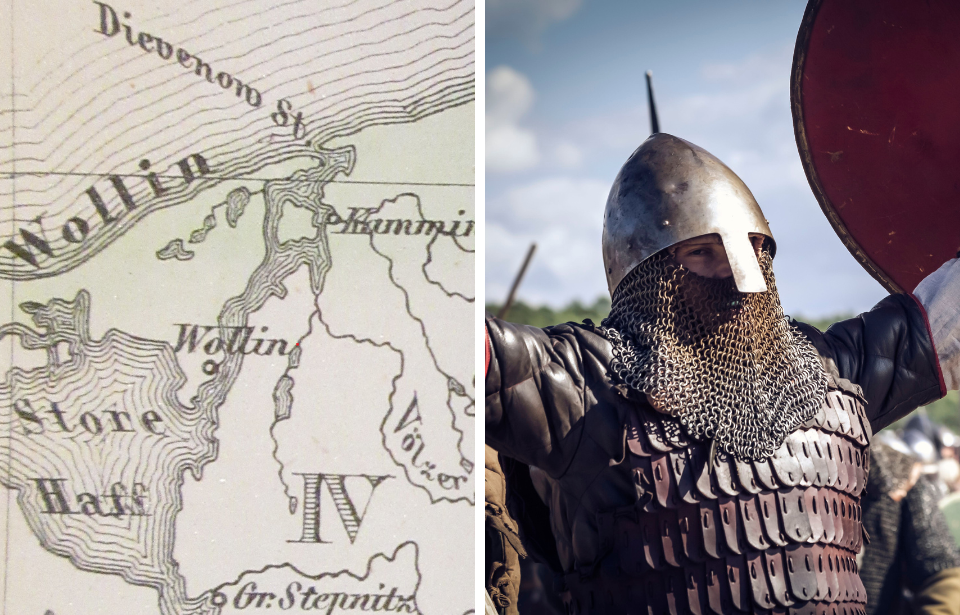Recently, an observation tower was built on a hill on the Polish island of Wolin in the Baltic Sea. The local government asked a researcher in the archaeology and ethnology department of Poland’s Academy of Sciences, Wojciech Filipowiak, to survey the area before they broke ground. The hill they were building on was called Hangman’s Hill, and while it is now a public park, it had historically been an execution ground, cemetery, and, some believe, a site for human sacrifices.
What Filipowiak found was far more intriguing than the macabre artifacts that people assumed would be buried there. What he discovered were the remnants of a village that may have been a Viking stronghold called Jomsborg. Scholars have been divided on whether the village really existed, with some saying it was a real place and others saying it was just a legend. Filipowiak believes his discovery provides evidence of Jomsborg’s existence.
Jomsborg
It is a well-known fact that Vikings founded settlements along the Baltic coast in Poland. While there, they traded in salt, amber, and other commodities and also engaged in a lucrative human trade that saw Vikings enslave Slavic peoples. What is unknown is where the largest settlement in the region was located – and whether it truly existed or was just a legend.
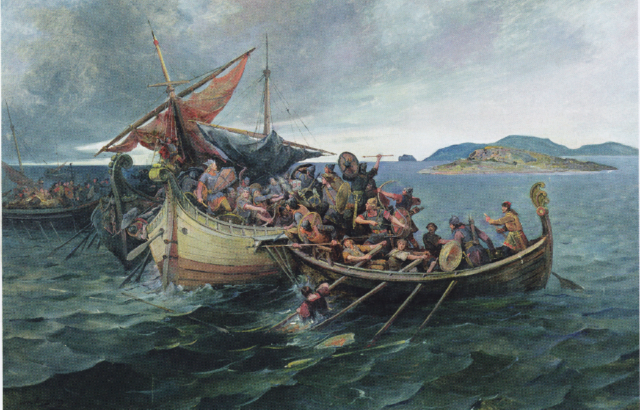
About his discovery, Filipowiak said, “It is very exciting… It could solve a mystery going back more than 500 years: Where is Jomsborg?” Jomsborg was a town and military stronghold that’s been described in texts dating from the 12th century.
According to Norse sagas, Jomsborg was founded by the legendary Viking warrior, Palnatoke, in the 10th century. It was a fortified city inhabited by a group of elite warriors known as the Jomsvikings, who were known for their exceptional fighting skills and strict code of conduct. It’s believed that Jomsborg was burned down by rival Dano-Norwegian king Magnus the Good in 1043.
People are intrigued by Vikings
The mayor of Wolin, Ewa Grzybowska, said that a nearby beach resort gets far more attention than Wolin. She hopes the discovery will lead to more tourism for the town and region. As Grzybowska put it, “Vikings are sexy and attract a lot of interest.” Certainly, with television programs such as Game of Thrones being so popular, Vikings have taken hold of the public imagination.

In an interview with the New York Times, Grybowska pointed out her office window to a square that is believed to contain more medieval artifacts. Grybowska said, “Wherever you go here, there is a piece of history.”
Hunting for Viking relics
Public interest in Vikings has led to numerous researchers, both professional and amateur, searching for remnants of Viking settlements in the Wolin region. One such amateur historian is Marek Kryda, who wrote a book in 2019 denouncing Polish archaeology as “a morass of ethnic chauvinism mostly blind to the role of Vikings played in the early formation of Poland.”
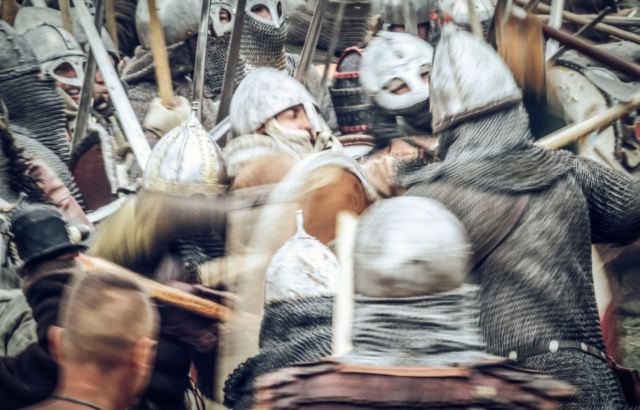
In the summer of 2022, he created more controversy when he told The Daily Mail that he had located the grave of Harald Bluetooth, a Danish Viking king who once ruled the region. Historians believe that Harald died in the area toward the end of the 10th century, although the consensus is that he was taken back and buried in Denmark.
Was Harald buried near Wolin?
Kryda said that Harald’s burial mound was in Wiejkowo, a village inland from Wolin. He came to this conclusion via satellite imaging. Filipowiak, however, called his claim “pseudoscience.” The allegations about Harald Bluetooth’s burial site have created a great deal of division.
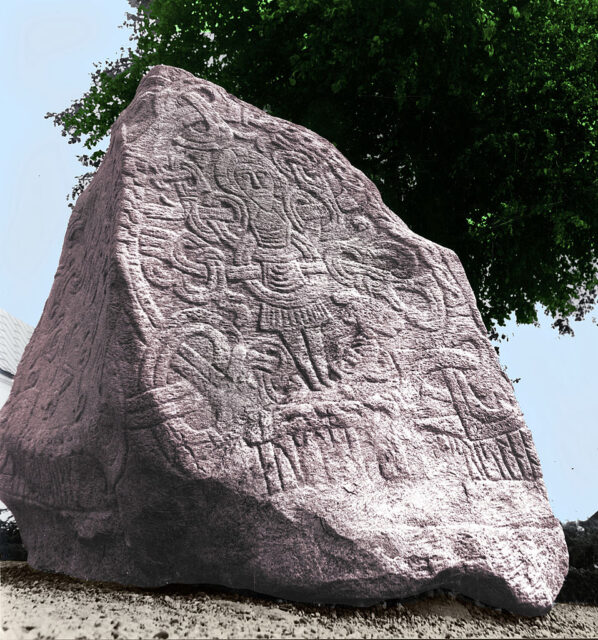
Mayor Grzybowska said that she was not qualified to say whether or not Harald was buried there, although she admitted, “It would add special splendor and grandeur to our island.”
Filipowiak hopes to end the mystery
Just as the location of Harald Bluetooth’s burial has caused division, so too has the existence of Jomsborg. Kokora described the Viking settlement as the “medieval New York on the Baltic.” It would have been populated by Vikings, Germanic, and Slavic peoples, but became a thing of legend when its physical location disappeared and all that remained were mentions of it in ancient texts.
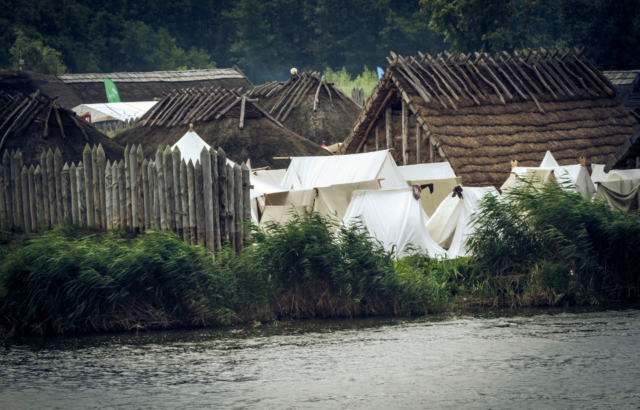
It reportedly had thousands of inhabitants and included a fortress. Jomsborg also had a dock that accommodated Viking ships, making the site one point in a massive Viking network that stretched from Eastern Europe to Scandinavia, North America, and as far away as Morocco. Shards of pottery gave clues into this large network, since as Kokora suggested, neither Vikings nor Slavs made much pottery, and neither were very good. She admitted, “They just took from the Slavs.”
A long search
The first archaeological excavations in the Wolin area were made by the Germans in the 1930s. While they hoped to find the Viking stronghold of Jomsborg, they never found it. Today, Filipowiak believes that the site he’s started to excavate may be what they were all looking for.
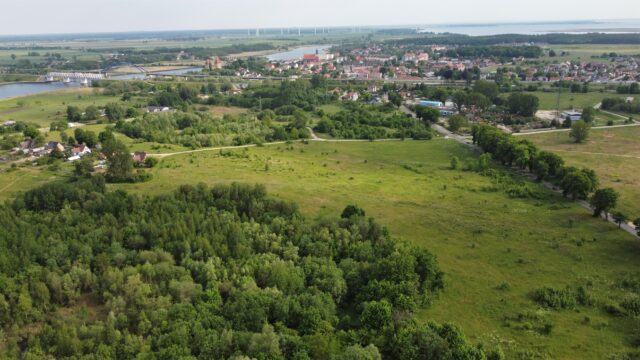
More from us: Did Vikings Use Crystals To Navigate The High Seas?
Filipowiak believes the site is Jomsborg is “80 percent” certain of this. He also said that the debate over Jomsborg’s location, and whether or not it even existed, has been “a very long discussion,” and indicated that he’d like to “help end it.”
Let us know what you think in the comments below.
